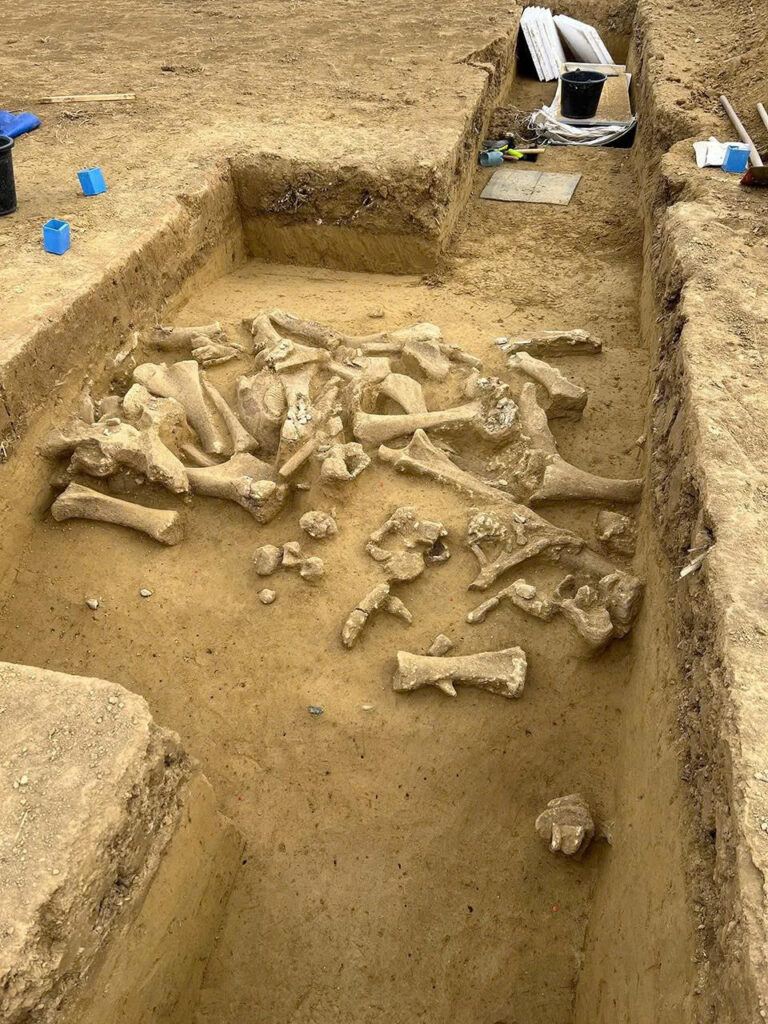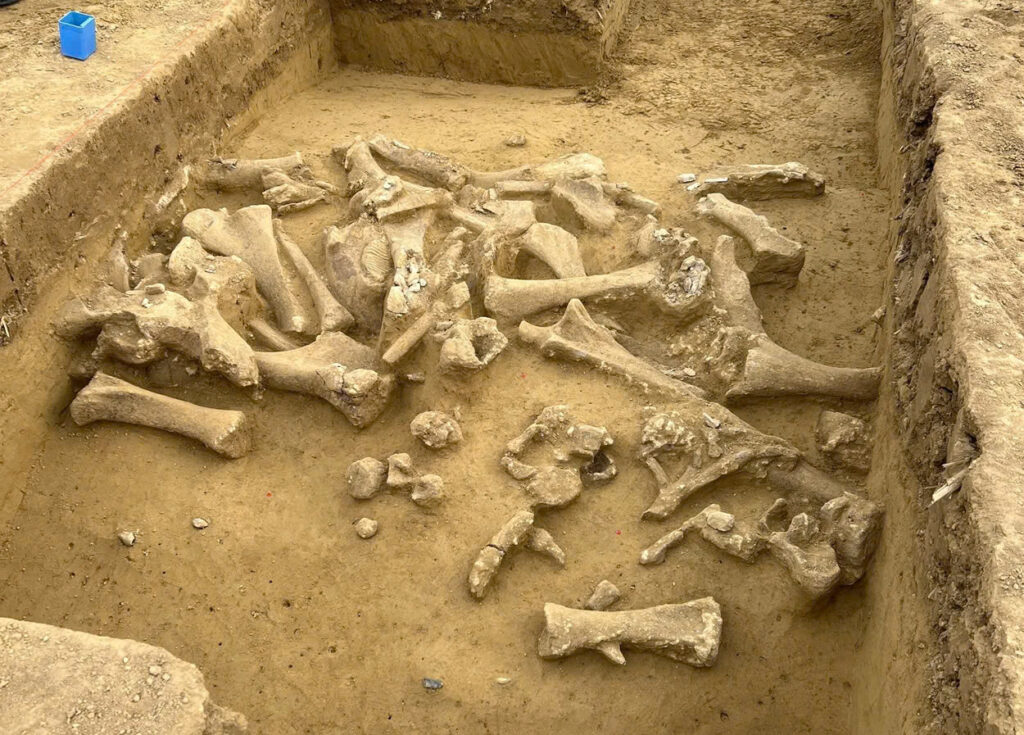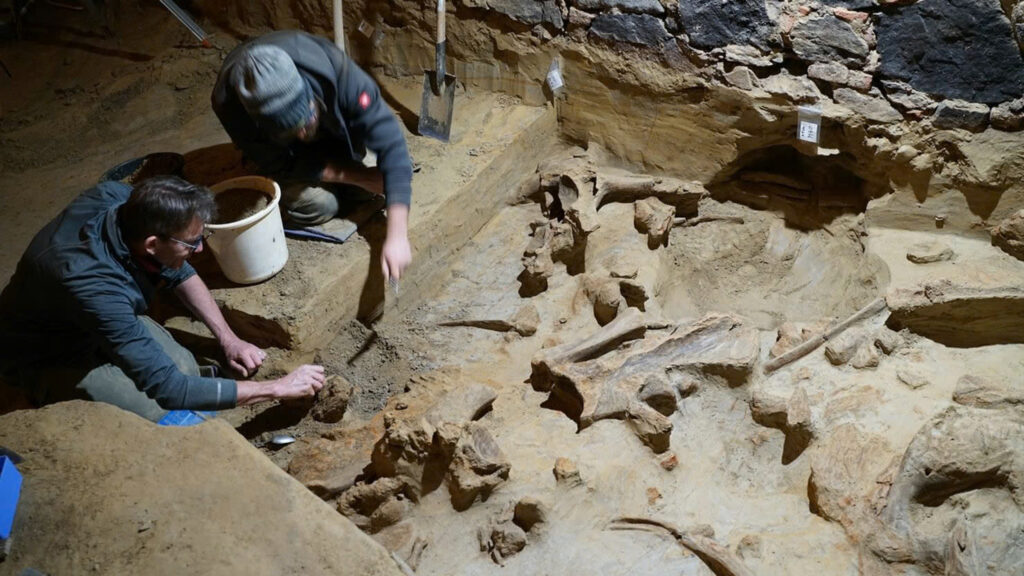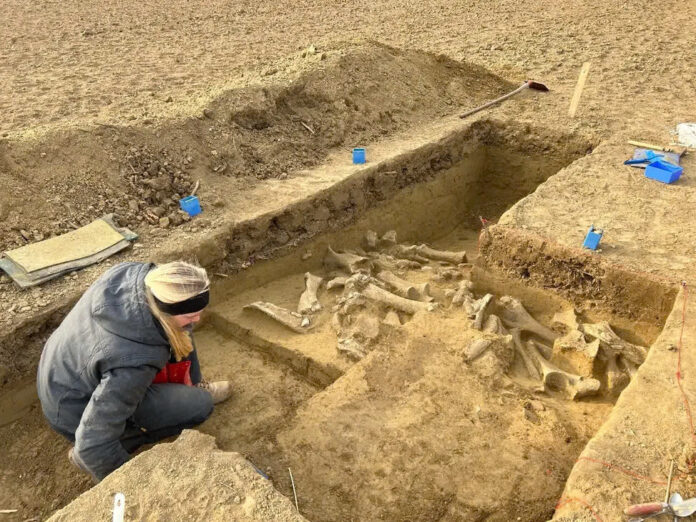In a remarkable archaeological discovery that offers a fascinating window into prehistoric life, researchers have uncovered extensive mammoth remains that tell a compelling story of human ingenuity and survival before the peak of the last Ice Age.
Significant Mammoth Discovery Unearthed in Lower Austria
Archaeologists from the Austrian Academy of Sciences (ÖAW) have made an extraordinary find during excavations in Langmannersdorf an der Perschling in Lower Austria. The team has uncovered the skeletal remains of at least five woolly mammoths dating back approximately 25,000 years, significantly expanding our understanding of prehistoric human-animal interactions in Central Europe.

The Langmannersdorf site, first identified in the early 20th century, was already known for two hunting encampments and mammoth deposits. However, these new findings provide unprecedented insights into how Ice Age hunters utilized these magnificent creatures.
Mammoth Valley: A Prehistoric Migration Route
During this period, the Perschling Valley served as a crucial migration corridor and grazing area for mammoth herds traversing Central Europe. This natural pathway created the perfect opportunity for prehistoric hunters to intercept these massive animals, establishing the valley as a significant hunting ground.
Remarkable Evidence of Prehistoric Butchering and Craftsmanship
The recent excavation revealed two mammoth bone accumulations just 15 meters apart, each telling its own story of human activity:
Butchering Site Reveals Hunting Success

One accumulation contains clear evidence of butchering activities on at least two mammoths, demonstrating how prehistoric humans systematically processed these enormous animals for food.
Video
Ivory Workshop Shows Advanced Craftsmanship
The second accumulation, containing remains of at least three mammoths, reveals something even more fascinating—evidence of sophisticated ivory processing. The site contains both intact and dismembered tusks, suggesting that hunters were not only consuming mammoth meat but also crafting specialized tools such as ivory spearheads directly at the site.
Scientific Analysis Reconstructs Ice Age Environment

Through cutting-edge research methods including DNA analysis, stable isotope studies, radiometric dating, and paleodemographic modeling, scientists have reconstructed the environmental conditions and human activities of this period.
“The fact that we found not just individual bones here but intensively used areas in which several animals were processed has more than exceeded our expectations,” explains Marc Händel of the Austrian Archaeological Institute of the Austrian Academy of Sciences.
These discoveries provide valuable insights into the hunting strategies and lifestyle adaptations of humans living in this challenging environment 25,000 years ago—offering a rare glimpse into life before the peak of the last Ice Age and highlighting the remarkable resilience and resourcefulness of our ancestors.

